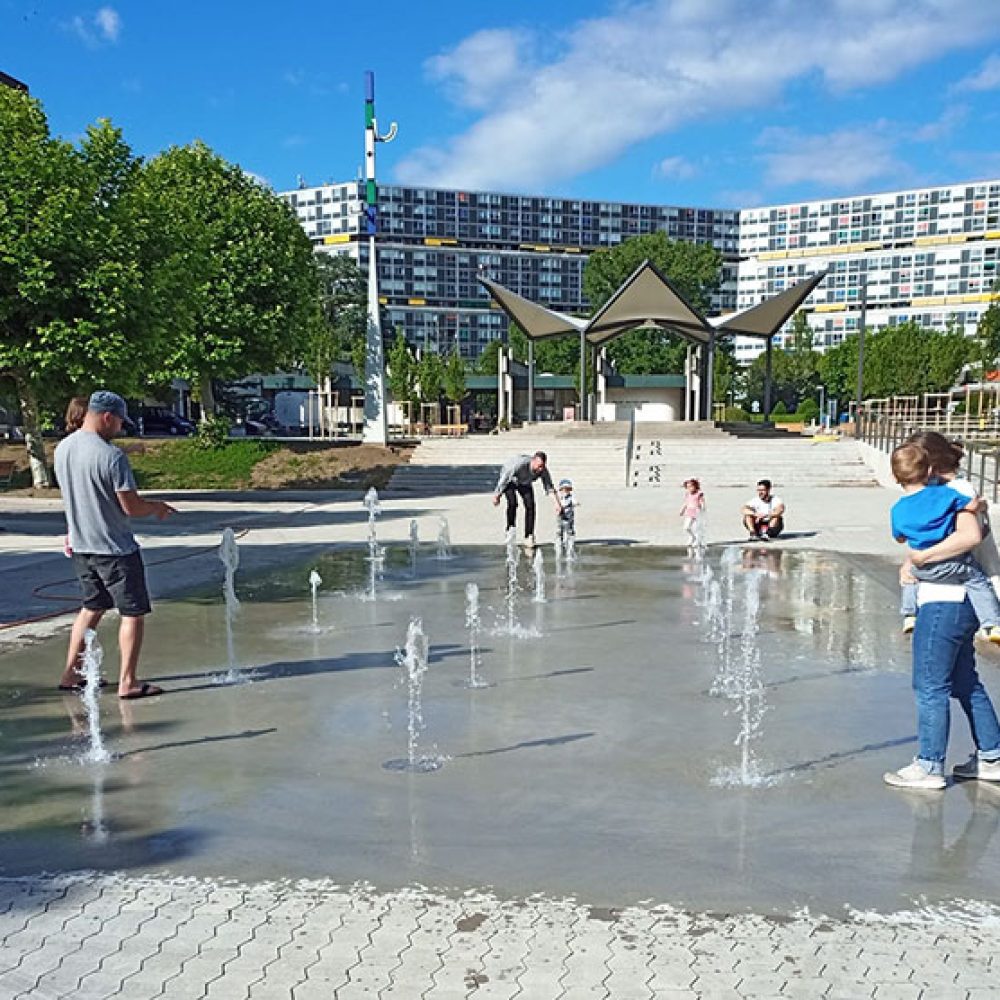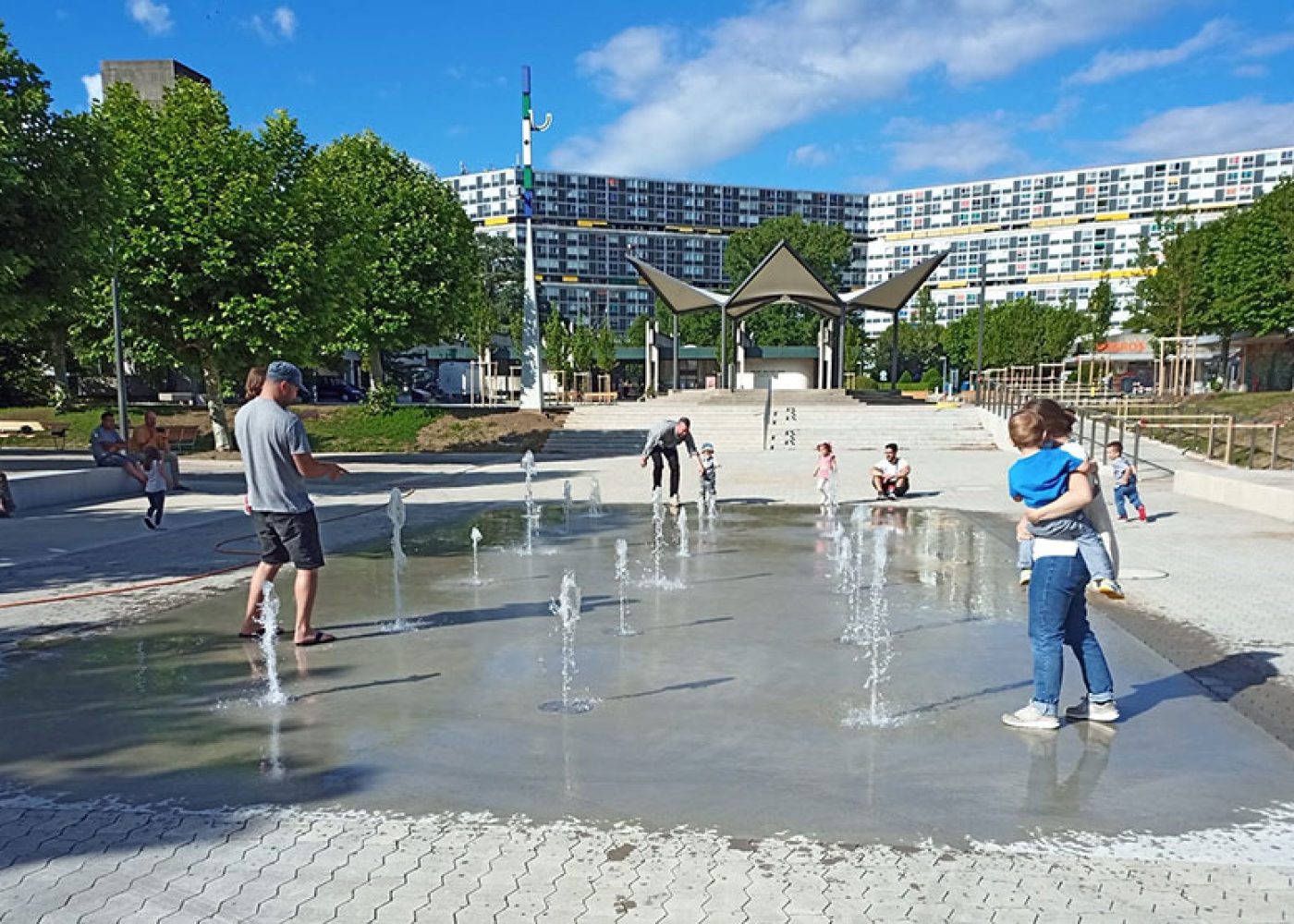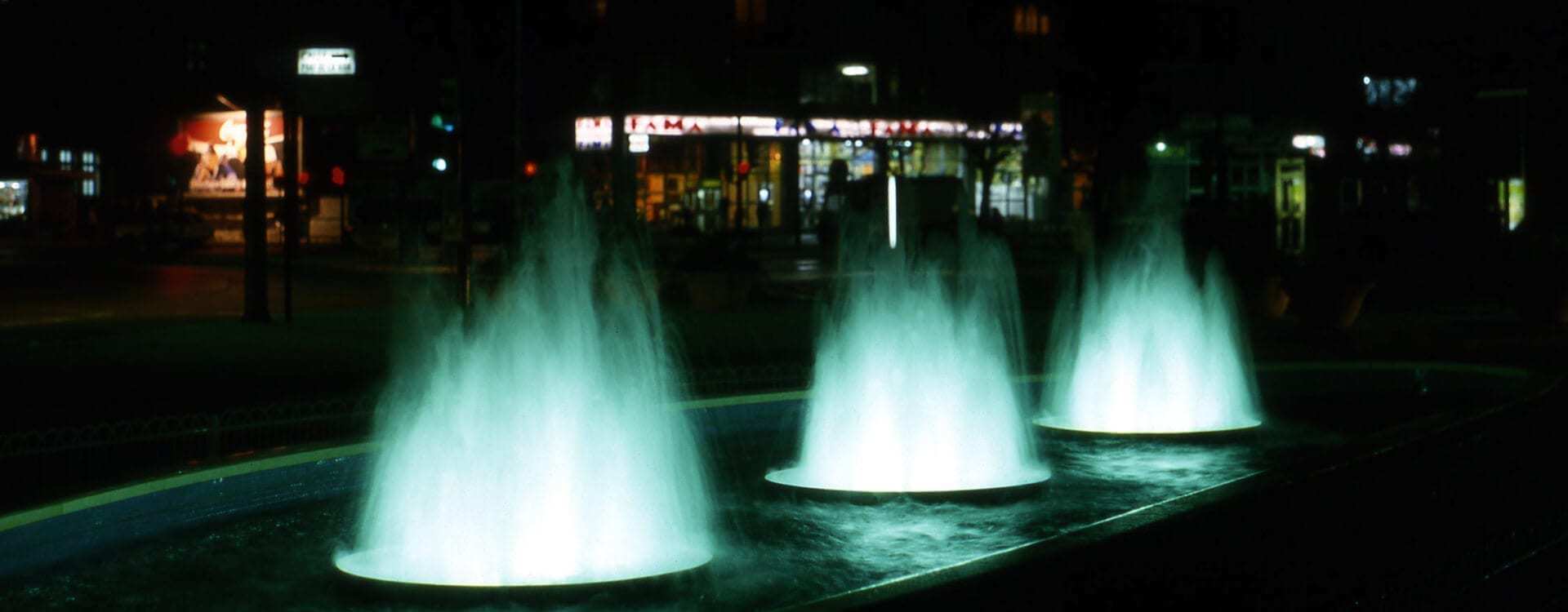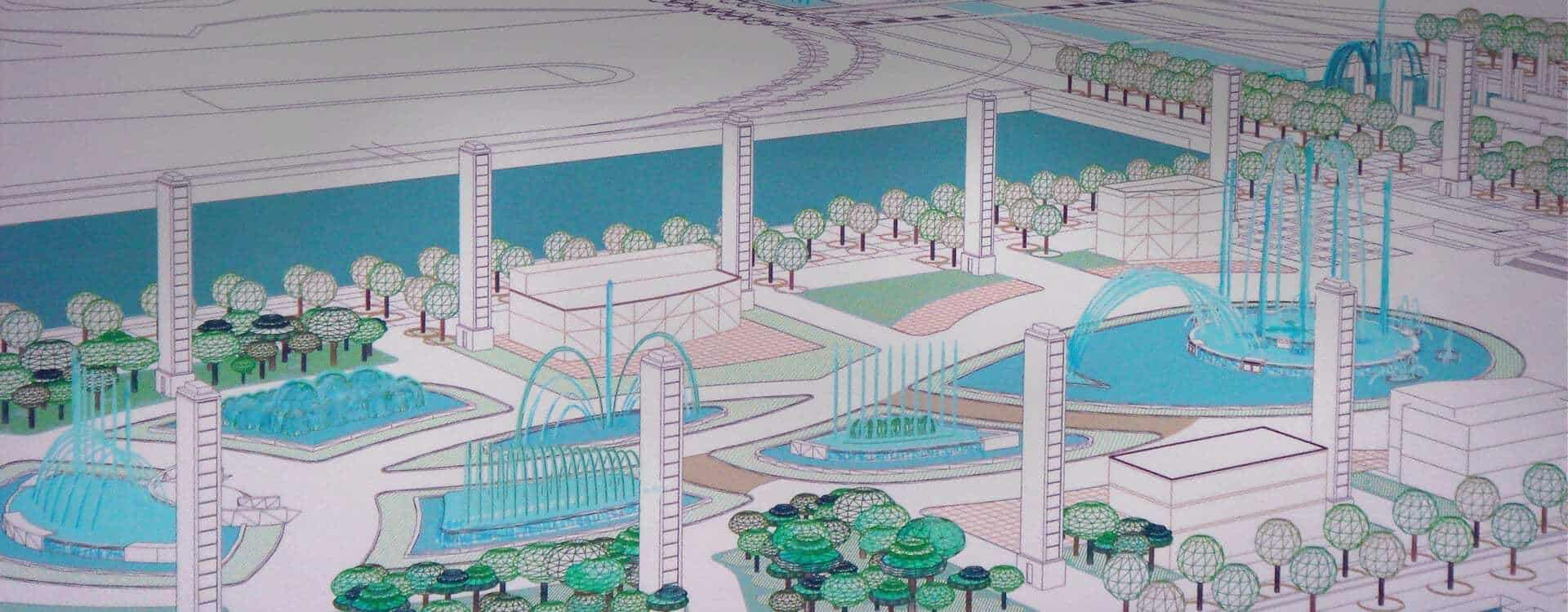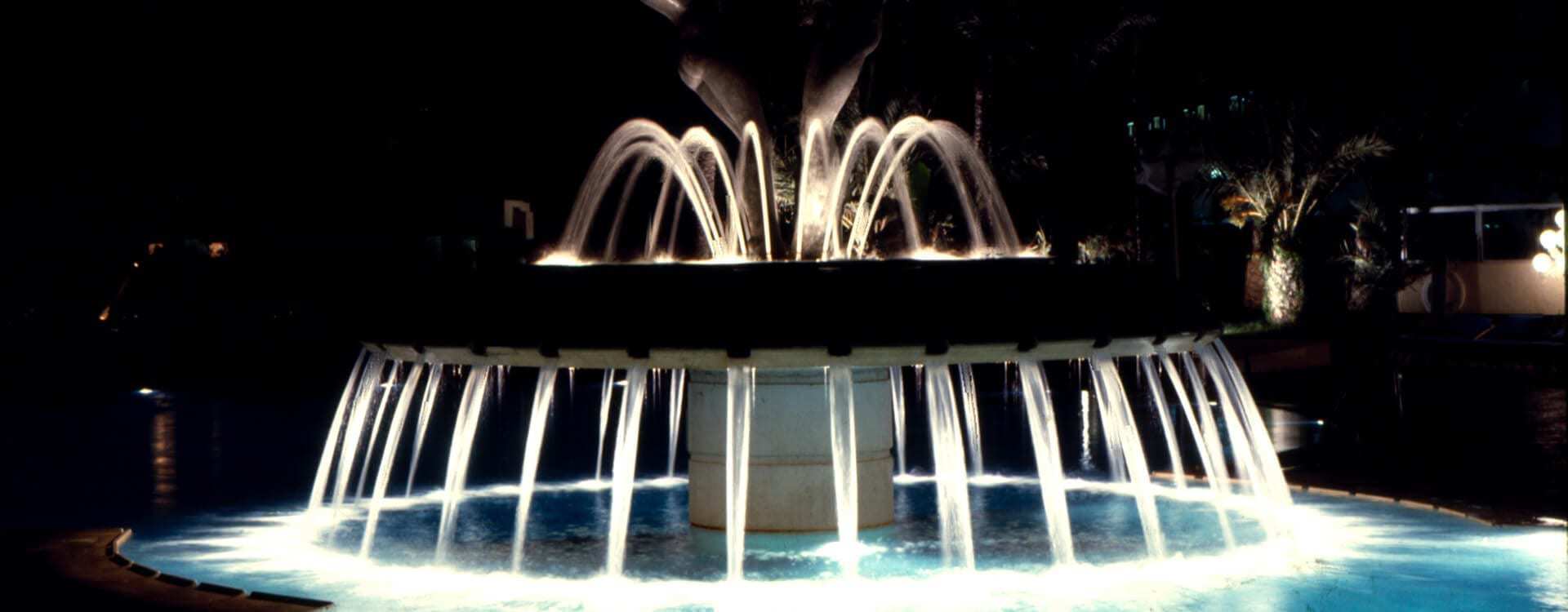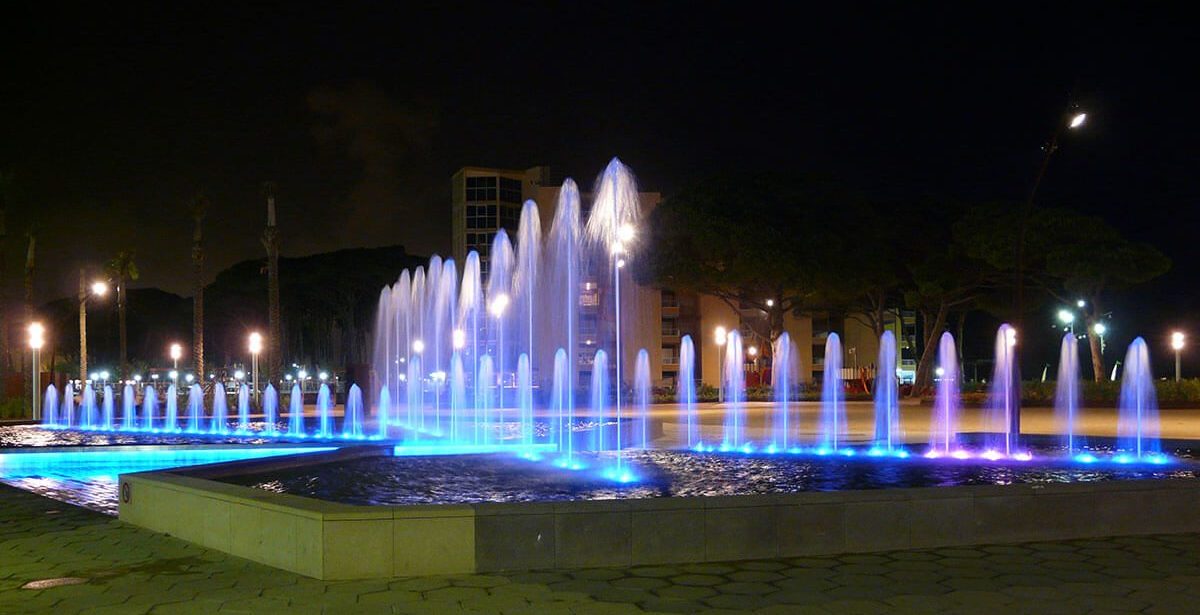Design
Once the project was defined, it was decided that the fountain itself would be walk-through in a clear paved area using the square’s existing floor, next to a tree lined area. This decision was taken due to the fact that walk-through fountains do not compromise the area where they are located. In other words, the area can be used for other alternative uses when the fountain is not in operation, and which are the most accessible when creating water displays where children can play.
The second point that had to be taken into account in relation to the fountain design was the shape size and safety of the fountain. As can be seen from the plans, the fountain is adapted to the shape of the square, leaving free walking areas on both sides of the square, always prioritising pedestrians’ freedoms.
Installation
The fountain was installed in a period of four months. We can divide the process into three phases, which on occasions overlapped:
- Civil works
Which included excavation and ground levelling work where the systems were to be installed. During this phase we have to take into account the location of the technical room, where the majority of the systems are found and its conduits to the fountain base. This room should be accessible for subsequent maintenance of the fountain.
- Installation of hydraulic and electrical parts.
This phase had to be coordinated with the civil works due to the fact that all parts were underground.
When the lowering of the paving took place, the jet basins are installed, along with the connections to the technical room, with assembly of the pumps, water treatment system and other necessary hydraulics.
The installation comes with water pumps, a compensation tank, a centralised water treatment system, connected to each utility box, connection and drain.
Grids are installed covering the utility boxes, which collect the returned water to be reused.
- Connection and putting into operation:
Once all the parts have been correctly fitted, all the equipment’s electrical connections are connected to the control panel located in the technical room. This panel is equipped with our Syncroshow® software, developed and improved throughout the last 20 years, which allows control of the fountain at all times from any device with access to the Internet.
Thanks to the software, all the fountains’ elements are programmed in order for them to act according to the specific timetables, weather conditions etc. For example, the anemometer, which is an important part of this type of fountain, regulates the jet height and function of wind speed.
This software comes with a highly intuitive design, which allows simple modification of the parameters during maintenance.
After connecting all the parts and programming the specific operation parameters, the putting into operation tests took place.
Sustainability
We are highly aware of the European sustainability criterion in relation to all of our projects. Our fountains use hard wearing, top-quality materials, such as stainless steel and IP68 materials. Installing these materials ensures more sustainable use of all resources thanks to their extended useful life.
In addition, we design the installation in order for it to be as efficient as possible in relation to energy consumption. To do this we use low-power LED lights and create the installation in order for it to operate with the lowest amount of power possible, without losing performance.
All our projects operate with closed-circuit water thanks to the water treatment system, which allows a reduction of consumption, limiting them to sporadic water provision when necessary.
Functions
The fountain comes with different modes allowing us to program it according to the timetable, in order to offer various effects.
- Static: continuous operating mode, which comes with small variations.
- Water displays: variations in height and jet operation during the day via various program sequences.
- Eco: Basic operation mode for low-level public periods.

